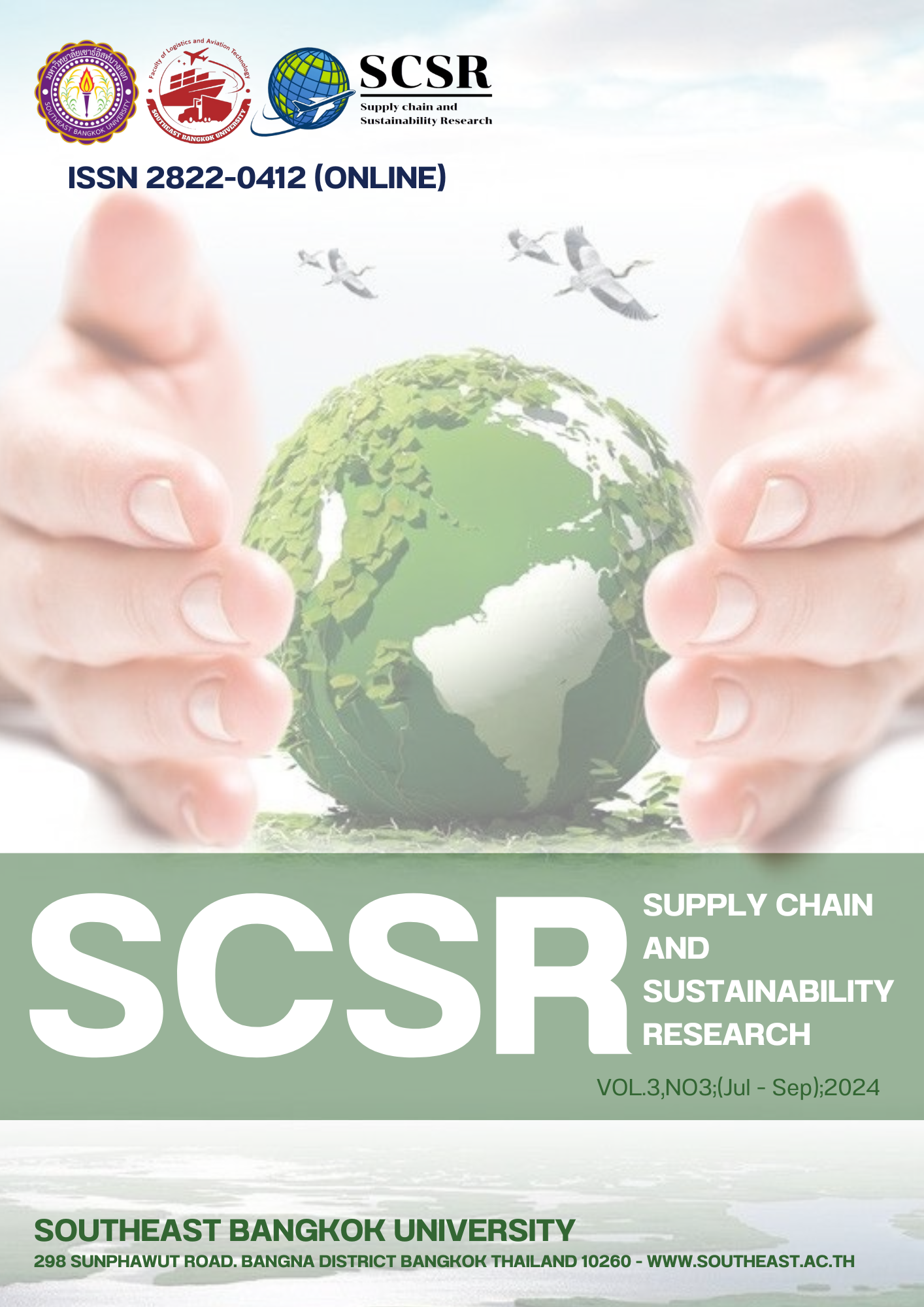Research on Marketing Strategies of Decoration Design Company's Supply Chain
Main Article Content
บทคัดย่อ
With the rapid development of China’s real estate industry and improved living standards among urban and rural residents, the demand for decoration design services has surged, driving the continuous growth of decoration design enterprises. However, fluctuations in the real estate market have intensified competition, presenting challenges to sustaining business development. Marketing management plays a crucial role in addressing these challenges, with a focus on formulating scientific marketing strategies to guide enterprise growth and ensure stability. This paper examines MS Decoration Design Company, leveraging literature review and field research to analyze its marketing strategy dilemmas. Key issues include ambiguous target customer groups, misalignment between product offerings and price positioning, insufficient brand awareness, limited marketing channels, and a lack of personalized services. These challenges highlight significant deficiencies in the company’s marketing strategy framework. To address these issues, this study applies SWOT analysis to propose targeted countermeasures. These include diversifying core business offerings, expanding market reach, optimizing the industrial ecological environment, and refining the company’s strategic focus. Recommendations emphasize clearly defining target customer groups, aligning product and price positioning, strengthening brand planning, enhancing channel development, and prioritizing personalized service delivery. By implementing these strategies, MS Decoration Design Company can improve its marketing approach, achieve sustainable development, and contribute to the broader growth of the decoration design industry.
Article Details

อนุญาตภายใต้เงื่อนไข Creative Commons Attribution-NonCommercial-NoDerivatives 4.0 International License.
บทความนี้ได้รับการเผยแพร่ภายใต้สัญญาอนุญาต Creative Commons Attribution-NonCommercial-NoDerivatives 4.0 International (CC BY-NC-ND 4.0) ซึ่งอนุญาตให้ผู้อื่นสามารถแชร์บทความได้โดยให้เครดิตผู้เขียนและห้ามนำไปใช้เพื่อการค้าหรือดัดแปลง หากต้องการใช้งานซ้ำในลักษณะอื่น ๆ หรือการเผยแพร่ซ้ำ จำเป็นต้องได้รับอนุญาตจากวารสารเอกสารอ้างอิง
Bryman, A. (2016). Social research methods. Oxford University Press.
Chen, K., Long, H., & Qin, C. (2020). The impacts of capital deepening on urban housing prices: Empirical evidence from 285 prefecture-level or above cities in China. Habitat International, 99, 102173.
Eisenhardt, K. M. (1989). Building theories from case study research. Academy of Management Review, 14(4), 532-550.
Gann, D. (2000). Building innovation: Complex constructs in a changing world. Thomas Telford.
Gurl, E. (2017). SWOT analysis: A theoretical review.
Hänle, F., Cambré, B., & Weil, S. (2022). A systematic review on the internationalization of Chinese SMEs: Thematic expansion, new impulses and potential avenues for future research. Journal of Entrepreneurship in Emerging Economies, 14(6), 1188-1228.
Kotler, P., Keller, K. L., Brady, M., Goodman, M., & Hansen, T. (2016). Marketing Management 3rd end PDF eBook. Pearson Higher Ed.
Kovacevic, L., & Ivanova, A. (2014). Innovative concept for the decentralized production of heat and power and impact on the heating and cooling network.
Li, X., Zhang, M., Yang, L., Yue, X., & Xiong, X. (2024). Current state and development trend of China's customized home furnishing industry. Wood Material Science & Engineering, 1-13.
Porter, M. (1998). Competitive strategy: Techniques for analyzing industries and competitors.
Smith, W. R. (1956). Product differentiation and market segmentation as alternative marketing strategies. Journal of Marketing, 21(1),
-8.
Yin, R. K. (2018). Case study research and applications. The People's Education Press.
Zhao, Z. Y., Zuo, J., Zillante, G., & Zhao, X. J. (2012). Foreign architectural and engineering design firms’ competitiveness and strategies in China: A diamond model study. Habitat International, 36(3), 362-370.


